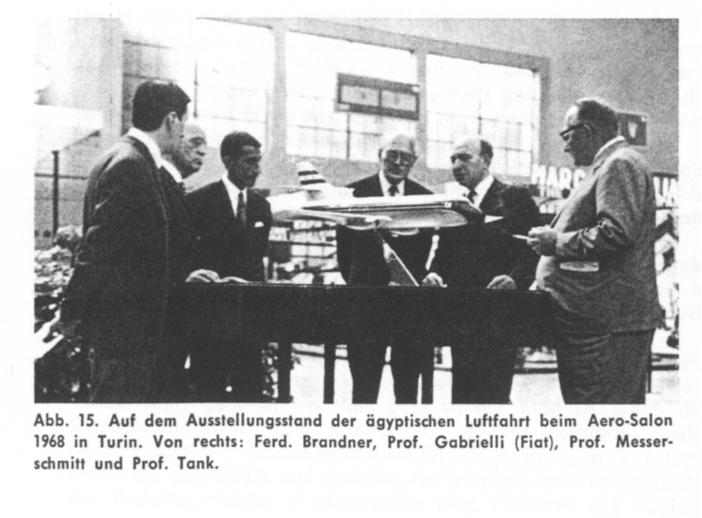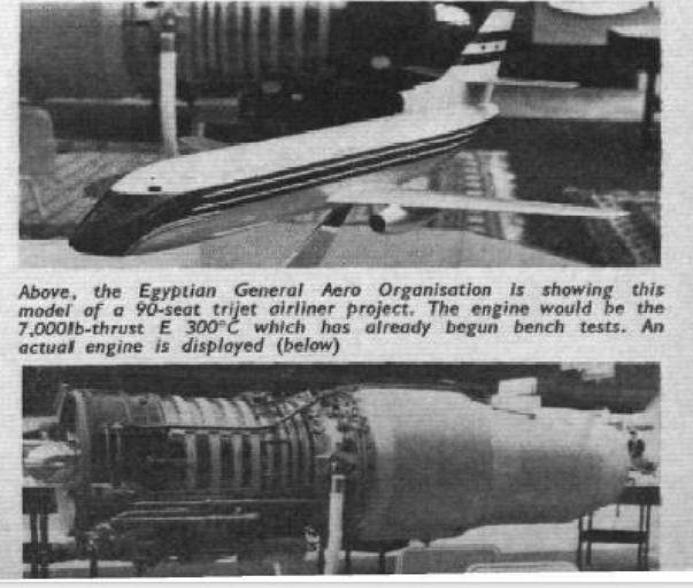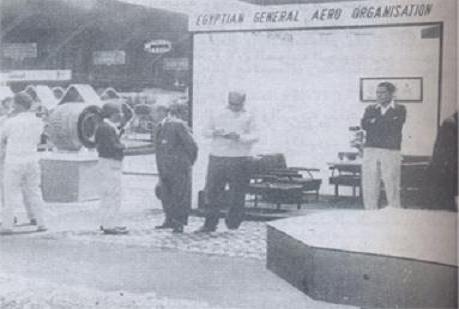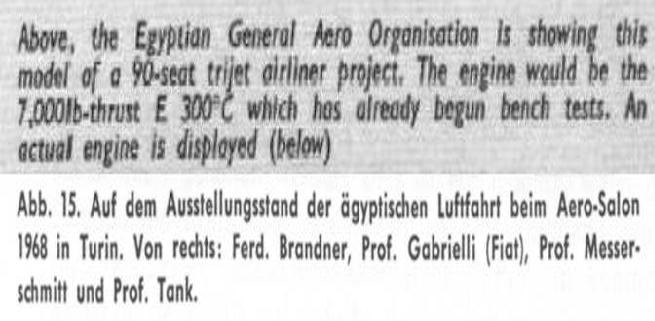تثبيت التطبيق
How to install the app on iOS
Follow along with the video below to see how to install our site as a web app on your home screen.
ملاحظة: This feature may not be available in some browsers.
أنت تستخدم أحد المتصفحات القديمة. قد لا يتم عرض هذا الموقع أو المواقع الأخرى بشكل صحيح.
يجب عليك ترقية متصفحك أو استخدام أحد المتصفحات البديلة.
يجب عليك ترقية متصفحك أو استخدام أحد المتصفحات البديلة.
صورقديمة ولغز كبيـــر ,,,,
- بادئ الموضوع Fawzy
- تاريخ البدء
وايه تانى ؟؟؟؟؟يبدو إذن أنها لم تتخطى مرحلة التصميم المبدئى.
لتحميل الملف كامل من هنــا
وايه تانى ؟؟؟؟؟
لتحميل الملف كامل من هنــا
أعتقد أنك تقصد المحرك
والتصميم نفسه يا ترى مبنى على ايه ؟؟؟أعتقد أنك تقصد المحركلأنه نسخة ذات دفع 7000 رطل من محرك القاهرة 300
كل اللى نعرفه انها طائرة بـ 3 محركات تتسع لـ 90 راكب والمحركات بقوة 7000 رطل
ولازم توفير نسخة من المحرك بقوة دفع 10000 رطل
التصميم نسخه من الدريم لاينر في ال outlines !!!!!!!!!!!!!!!!!!!!!!!!!!!
و شكلها عموما في الايرو داينامكس مشابه للتصاميم الحديثة ما عدا الذيل
و شكلها عموما في الايرو داينامكس مشابه للتصاميم الحديثة ما عدا الذيل
مش عارف برضهالتصميم نسخه من الدريم لاينر في ال outlines !!!!!!!!!!!!!!!!!!!!!!!!!!!
و شكلها عموما في الايرو داينامكس مشابه للتصاميم الحديثة ما عدا الذيل
حاولت اعلم مقارنة بينها وبين طائرات اليوشن والانتونوف فى الخمسينات و الستينات ومش لاقى تشابه
كان فيه اخ قبل كده ساعدنى فى البحث ولقى بعض معلومات , افتكر انها كانت عن تطوير المحرك
الصادم فى الموضوع انه برغم ان المشروع لم يرى النور بعكس القاهرة 300 الا انه دلاله هامه على " طموح " الدولة فى ان يكون عندها مشروع زى ده
احنا بنتكلم عن الستينات يعنى امكانية تنفيذ مشروع زى ده وزى 300 كان لا يقوى عليها الا دول معدودة حول العالم

مش عارف برضه
حاولت اعلم مقارنة بينها وبين طائرات اليوشن والانتونوف فى الخمسينات و الستينات ومش لاقى تشابه
كان فيه اخ قبل كده ساعدنى فى البحث ولقى بعض معلومات , افتكر انها كانت عن تطوير المحرك
الصادم فى الموضوع انه برغم ان المشروع لم يرى النور بعكس القاهرة 300 الا انه دلاله هامه على " طموح " الدولة فى ان يكون عندها مشروع زى ده
احنا بنتكلم عن الستينات يعنى امكانية تنفيذ مشروع زى ده وزى 300 كان لا يقوى عليها الا دول معدودة حول العالم

هي كلمة واحدة .............. ال WILL
عندك ارادة sky is the limit
انت ممكن تبدا بالتصاميم القديمة و تبني عليها
و ممكن تبدا من الصفر ، الفكرة حصة السوق اليوم متقسمة و غير زمان ، عشان الواحد يدخلها بايجابية محتاجين حاجة اكبر من الارادة ... و الاتنين مش معانا
لكن اعتقد الموضوع عند قراءته من سنين كان له علاقة بالعلماء الالمان الذين استقطبهم عبد الناصر مما يفسر استغرابنا من قوة التصاميم مقارنة بالوقت الحاضر اتمنى تصححلي لو كنت مخطئ
حقيقى ,, الارادة والعلماء الالمان وقتهاهي كلمة واحدة .............. ال WILL
عندك ارادة sky is the limit
انت ممكن تبدا بالتصاميم القديمة و تبني عليها
و ممكن تبدا من الصفر ، الفكرة حصة السوق اليوم متقسمة و غير زمان ، عشان الواحد يدخلها بايجابية محتاجين حاجة اكبر من الارادة ... و الاتنين مش معانا
لكن اعتقد الموضوع عند قراءته من سنين كان له علاقة بالعلماء الالمان الذين استقطبهم عبد الناصر مما يفسر استغرابنا من قوة التصاميم مقارنة بالوقت الحاضر اتمنى تصححلي لو كنت مخطئ
وللانصاف عبدالناصر كان عنده طموح " فظيع " فيما يخص المشروع ده تحديداً
مين وقتها كان عنده بيصنع او بيفكر يكون عنده مشاريع لطائرات ركاب
وفى اطار البحث د/ يحيى الشاعر نقل الموضوع ده من فترة فى اكثر من مكان وللاسف برضه مفيش جديد
تقبل تقديرى
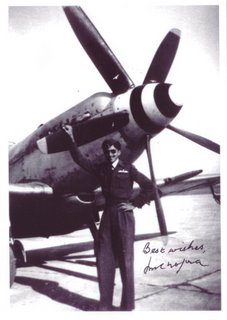
Wing Commander Inder Mohan Chopra
He was born on May 3, 1932. He was commissioned in the flying branch of the Indian Air Force (IAF) on June 16, 1951 and was awarded the Sword of Honour for standing First in the course. He became a flying instructor in August 1953. Chopie graduated from Empire Test Pilots School UK in December 1957. Immediately after graduation he flew Hunters for production testing with Hawker Aircraft Ltd at Dunsfold, UK for six months. He was on deputation from the IAF to Hindustan Aeronautics Ltd. Bangalore (HAL) form January 1961 to May 1966. During this period he was actively involved in prototype development of the Marut HF 24. He carried out the first flight of HF24 Mk 1A with Orpheus Engine Reheat. Marut HF 24 Mk 1BX was modified for fitment of the Egyptian E300 engine on the right side with normal Orpheus engine on the left. It was the first Marut with twin hydraulic systems with no manual reversion. The tail plane and elevator were split but both were hydraulically operated. It was initially flown in Bangalore with the Orpheus fitted on both sides. Chopie did the first flight. The aircraft was then sent to Egypt.
Chopie was deputed to the Egyptian Aero General Organisaton, Helwan for flight development of the E300 engine in June 1966. A HAL team of about 25 headed by Gp.Capt. C. S. Naik (Retired as Air Marshal) was also sent to maintain the aircraft. The first flight with E300 engine fitted was done on March 29, 1967. A total of about 180 flights were done with the E 300 engine on the right and Orpheus on the left. The project was closed in July 1969.
http://profprodyutdas.blogspot.com/2013/12/thekaveri-turbofan-project-open-source.htmlIf reports that the Kaveri has reached 90% of its Full Military power are true it represents a considerable achievement for the Engineers concerned. It also indicates no foreign collaboration is required to complete this project. The above numerator is unfortunately tarnished by the denominator of several decades of development with no engine flight cleared and a realistic date of completion is uncertain. Jet Engines development presupposes certain facilities as sine quo non: a) Test rigs for combustion chamber development b) Test rigs for testing the compressor spools together at rated conditions, c) test rigs for testing the turbine blading for cooling, thermal and mechanical loads simultaneously and finally d) a flight test bed to test the engine in the air. Item d) is still not available in the country and there are reasons to believe that items a), b, c) were not available at the time of taking up the project and may not in fact be satisfactorily available even now. Recall that Egypt, developing the E300 engine under the guidance of Ferdinand Brandner, with much poorer traditions and resources, had a flying test bed , a modified AN12, in 1964,.
http://www.egyptsearch.com/forums/ultimatebb.cgi?ubb=print_topic;f=11;t=004904Egypt attempted to jump-start an indigenous defense industry program, with the HA-300 aircraft along with its E-300 turbojet. The latter engine was to be also used in a locally developed tri-jet airliner presented as a small scale model in a 1968 Italian air show, but none of which saw development into production phase due to diversion of funds elsewhere, with geopolitical issues on the horizon
E-300 Engine
Main article Brandner E-300
The HA-300 was originally designed for the afterburning Orpheus BOR 12 turbojet, but the engine did not achieve the minimum level of success Egypt required in the fighter jet, and president Nasser saw from the beginning a major threat to the national security in depending on British engine, because of the hostility that time between Egypt and Great Britain after the 1956 war suez crisis.
The fighter jet was then modified for the Egyptian Brandner E-300 engine, which would have an afterburning rating of 4,800 kgp, which achieved high level of performance.
India also helped in the funding of the Egyptian E-300 jet engine in exchange for a new powerplant for its HF-24 Marut. The E-300 jet engine ran for the first time in July 1963 successfully.
Brandner E-300
The Brandner E-300 was an Egyptian turbojet engine, developed for the Helwan HA-300 light jet fighter.
The Austrian engineer, Ferdinand Brandner, who had previously worked as a prisoner of the Soviet Union on the development of the Kuznetsov NK-12 turboprop that was the powerplant of the Tupolev Tu-95 bomber, moved to Egypt to lead a team to design an engine to power the Helwan HA-300 jet fighter that was simultaneously being designed by a team of Germans led by Willy Messerschmitt.
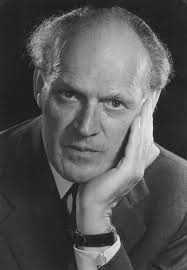
The new engine underwent bench testing in 1963, and was flight tested under the wing of an Antonov An-12, before being installed in a HAL HF-24 Marut for high speed testing, in which form it flew on 29 March 1967. The E-300 was installed in the third prototype HA-300 (the first two powered by Bristol Siddeley Orpheus engines), it flew at least one time and successfully, but the programme of HA-300 being abandoned in May 1969.
Variants
E-300-A
Military version for HA-300
E-300-C1
Civil version of E-300-A, proposed for Project 206 three-engined airliner.
E-300-C2
Proposed growth version of E-300-C1.
E-300-AF
Projected turbofan development.
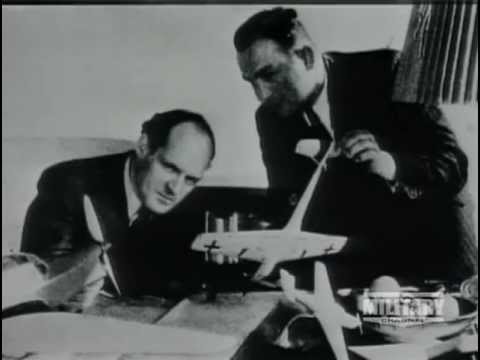
هما علماء المانيا و لاد ........
no one else can pull this off
هذه الدولة لو اطلق لها العنان 5 سنوات و اقسم لكم سنرى الرايخ الرابع
صحيح , حاجة زى العرق الصعيدى كدههما علماء المانيا و لاد ........، تحس انهم يتوارثون شيئا ما في ال DNA !
no one else can pull this off
هذه الدولة لو اطلق لها العنان 5 سنوات و اقسم لكم سنرى الرايخ الرابع
صحيح , حاجة زى العرق الصعيدى كده
بالضبط
لكن لا استطيع الانكار نجح هتلر فعلا في جعل الامر اعراق
او كائنات فضائية تركت لنا اليابان و المانيا لنرى how things are done !
بالنسبة للمشروع اراه جميل لوقته و ليس الآن فهي صناعة ضخمة لن نقدر على تغطية كل جوانبها الآن فات الاوان
ارى ان نحذو حذو اسرائيل مشاريع تغذية تقنية
drones
avionics
systems :RADARS , JAMMERS , AMMUNITION
aeronautics عموما
صحيحبالنسبة للمشروع اراه جميل لوقته و ليس الآن فهي صناعة ضخمة لن نقدر على تغطية كل جوانبها الآن فات الاوان
المواضيع المشابهة
- الردود
- 6
- المشاهدات
- 794
- الردود
- 294
- المشاهدات
- 28K
- مثبت
- الردود
- 95
- المشاهدات
- 18K
- الردود
- 1
- المشاهدات
- 883

